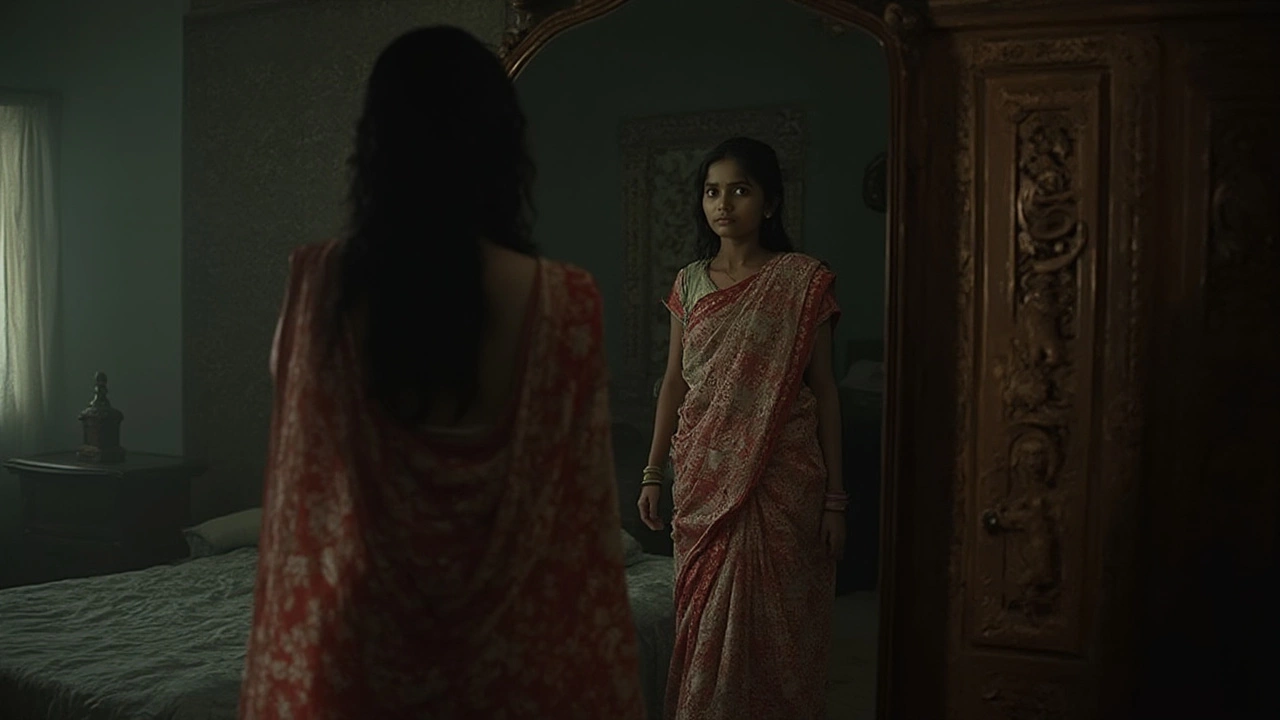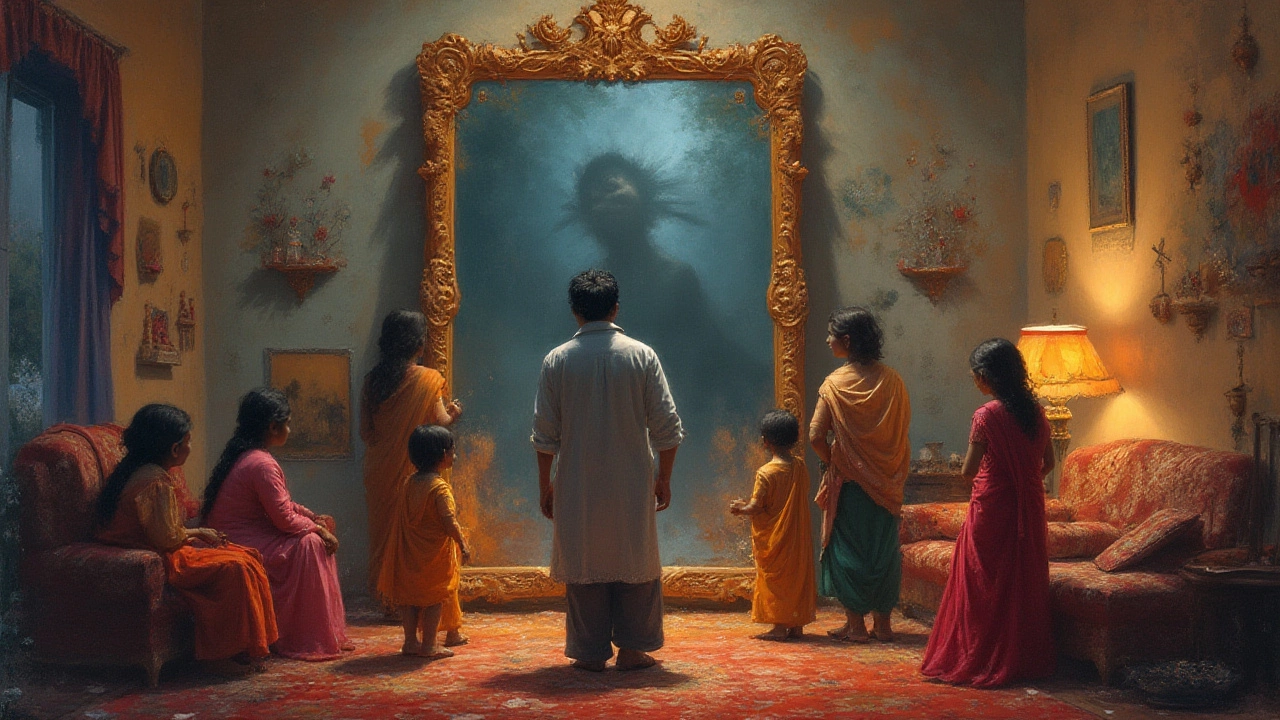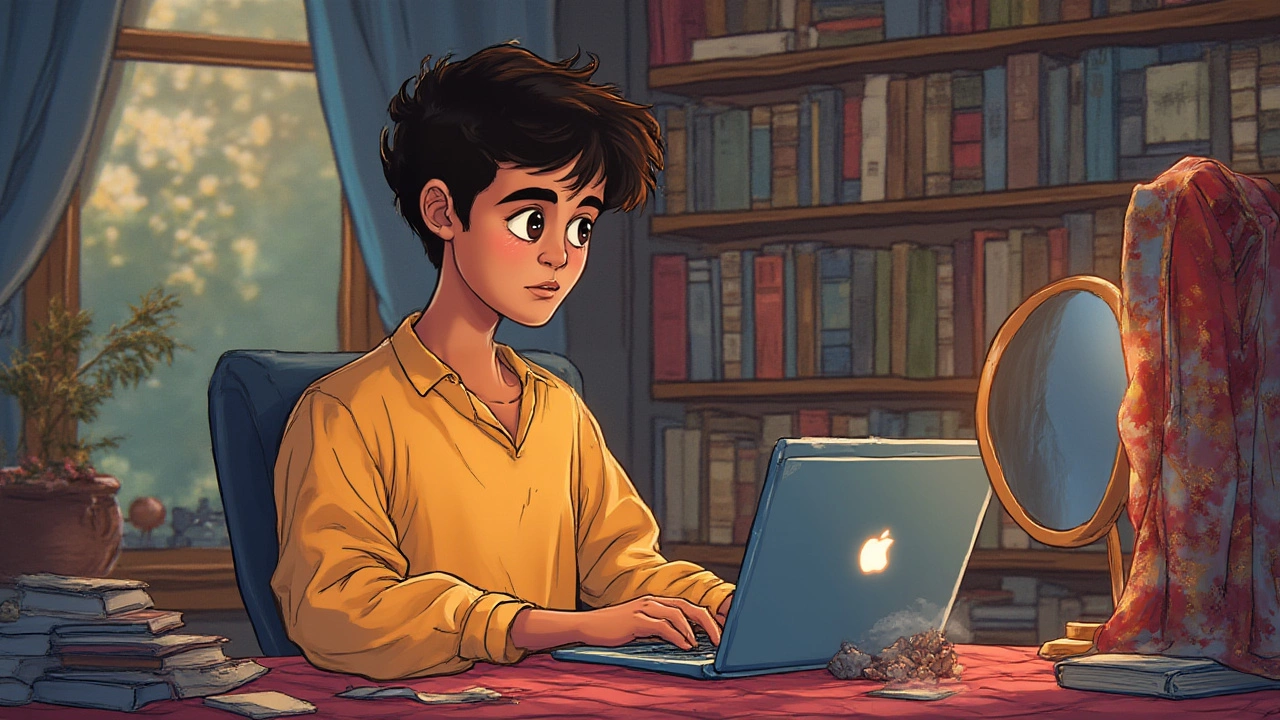Why Are Humans Afraid of Mirrors? Exploring Mirror Phobia, Myths & Psychology

Picture this: you’re turning out the bathroom light, and out of nowhere, the back of your neck tingles. Even rational adults sometimes feel weird glancing back at a mirror in the dark. It sticks out, because during the day mirrors are just another part of home life—great for doing hair or pretending you’re in a shampoo commercial. But when the sun goes down or you catch your reflection at an odd hour, things shift. Why? What’s behind this edge-of-your-seat tension when it comes to looking glass surfaces? Mirror fear sounds like some leftover childhood baggage, but the truth is, it runs deep—way deeper than haunted house stories. Our brains, history, and even pop culture all tangle together to make mirrors both fascinating and, well, a little terrifying.
The Roots of Mirror Fear: From Ancient Superstitions to Modern Brains
If you think your unease around mirrors is embarrassing, it’s not. Humans have been uneasy about mirrors for thousands of years, and it’s baked right into our history. The ancient Greeks thought mirrors were windows to other worlds—glancing at your own face could reveal omens or bad luck. Romans saw mirrors as soul trappers. If you broke one, you could expect seven years of misery. The number isn’t random—Romans figured we’re reborn every seven years. Bad luck gets reset after that. Even today, say the words “Bloody Mary” three times and Western kids know not to mess around with mirrors after dark. These superstitions aren’t just old stories. They’re a signal that humans have always found mirrors unsettling, maybe because they show us…us.
The scientific word for fear of mirrors is spectrophobia. Sometimes, it’s rooted in anxiety about the supernatural. Other times, it’s about body image—seeing a version of yourself that doesn’t match how you feel inside. Psychologists say that when we look at our reflections, something weird happens. Our brains do a quick double-take, matching what we expect to see with what’s actually there. Usually it’s fine, but if the light is weird or you’re stressed, the brain can lag behind. Ever felt like your reflection moved a split second after you did? That little delay can send chills down your spine.
Childhood plays a huge part, too. A 2021 University of Turin survey found that most kids get spooked by mirrors in darkness or low light—it’s about the uncertainty. If you grew up watching scary movies or hearing your siblings whisper about haunted mirrors, the brain wires fear in as a habit. And there’s a more technical twist: mirrors mess with depth perception and spatial recognition. In dim light, brains jump into “danger mode” because a mirror makes the room look bigger, deeper, or even reveals a strange movement that shouldn’t be there. This triggers an ancient survival instinct to pay attention to anything out of place, just in case a lurking danger is nearby.
Here’s something you might not know: hospital studies have shown that patients with psychotic disorders sometimes see things in mirrors that aren’t actually there. Mirrors are used as diagnostic tools because they sometimes unlock fears buried deep in the mind. A 2015 study from King’s College London had participants stare into their own eyes in a mirror for ten minutes. Over half said their reflection seemed to “melt,” morph into someone else, or look menacing. The longer the stare, the more likely the brain is to play tricks, a phenomenon scientists call the “strange-face illusion.”
If you want one concrete reason mirrors spook people, look at the science: our brains aren’t built for perfect self-recognition all the time. Most animals don’t recognize themselves in mirrors—only humans, chimps, elephants, and dolphins usually pass the famous “mirror test.” That’s elite company. Being able to see yourself, know it’s you, and then question that—well, that’s pretty uncanny. Whenever the lines blur, even for a second, it sets off alarms.
Even fashion reflects the unease. Centuries ago, people covered mirrors in a house when someone died, fearing the soul could get trapped or that they might glimpse death itself standing behind them. Some cultures believe mirrors facing beds drain your soul at night or invite bad spirits. These old traditions don’t just fade—they show up in the subtle ways we decorate and use mirrors in homes, often with an eye for safety or tradition rather than just style. Mirrors stir something primitive, a sense of mystery, and sometimes dread.

Modern Mirror Myths, Movies, and How Pop Culture Fuels the Fear
If you take a look at modern movies and TV, mirrors are everywhere, almost always with a spooky twist. Horror directors love playing with mirror scenes. Remember those chilling flicks where someone glances away from the mirror and, when they look back, there’s something—ghost, shadow, weird face—right behind them? That visual trick works because it messes with audience expectations and taps right into our ancestral jumpiness. Even if you don’t believe in ghosts, just seeing it on screen can give you the creeps the next time you pass by your own bathroom mirror in low light. A 2018 survey of horror movies by Movieweb found that mirror scares made the top five list of most-used jump scare setups in film history, ranking just behind old standbys like creepy kids and slamming doors.
But it’s not just movies. Urban legends, sleepover dares, and viral internet TikToks all keep the fear of mirrors fresh. Some of the most-viewed TikToks in 2024 featured “mirror glitches,” where people claimed their reflections didn’t sync up—or worse, started acting independently. While these are usually special effects or clever editing, they rack up millions of views and spark endless comment threads about what’s really behind the glass. The truth is, our brains are always hunting for patterns, so when mirrors mess with those patterns, even as a joke, it lingers in the mind and stirs up old childhood worries.
But there’s real psychology at play, too. A famous study by Stanford University in 2019 found that 72% of people who watched a horror movie involving mirrors felt genuinely uneasy for days afterward, especially at night or when home alone. That’s a solid stat—mirrors in horror don’t just deliver jump scares. They stick, working their way into your gut instincts. If you grew up with “Bloody Mary” or heard the countless tales of haunted mirrors—and then had those ideas reinforced visually—it’s no shock the fear feels so real.
Even outside the screen, interior designers sometimes avoid placing mirrors where people might feel watched or exposed. Buyers often ask for mirrored closets to face away from beds or private spaces, thanks to movies and rumors about bad energy or that unsettling feeling of being seen. Mirror placement tips aren’t just about Feng Shui; sometimes, it’s about pure comfort. Speaking of Feng Shui, the ancient Chinese tradition actually gives advice on mirror placement for harmony and peace, emphasizing that poorly placed mirrors can “bounce” negative energy or disturb sleep—another sign that people have thought carefully, if not anxiously, about mirrors for centuries.
And then there’s the science of why the “mirror glitch” videos feel so wrong. Human eyes and minds are hardwired for detecting tiny mismatches, especially involving faces (the so-called “uncanny valley” effect, where human-like things that look slightly off can be deeply unsettling). If a reflection in a mirror is out of sync by even milliseconds, people can get creeped out. Couple that with trick lighting or tired eyes, and it can get weird. Social media just amplifies these quirks, making us more aware—and sometimes more afraid—of the odd things mirrors seem to do. It’s amazing how fast one video can trigger thousands of people to re-examine the mirrors in their homes.
Here’s a quick look at how often mirror themes show up in pop culture, according to a media study (2022) that tracked scary story trends across books and movies:
| Media Type | Mirror-Themed Stories (%) |
|---|---|
| Movies (Horror) | 61% |
| Young Adult Novels | 45% |
| Urban Legends | 80% |
| TV Series (Supernatural) | 54% |
Clearly, mirrors and fear are close companions in our imaginations. They spark creativity as much as anxiety—and with each new story, the cycle keeps spinning, adding another layer to the curious relationship we have with our own reflections.

Coping With Mirror Anxiety: Practical Strategies and Fresh Insights
So what do you do if mirrors still make you uneasy—especially at night or when alone? Here’s the good news: most people can manage their mirror fears with a few simple changes and a little self-awareness. First, acknowledge that it’s normal. You’re not alone. Studies—including a 2023 YouGov poll—suggest that nearly 12% of adults admit to feeling unsettled by mirrors sometimes, usually in the dark. Just admitting you get weirded out takes away some of the power.
The first tip: control your environment. Lighting is a big deal. Soft, warm lighting around mirrors almost always feels safer than cold, shadowy light. Motion-activated nightlights or gentle wall sconces can lessen that eerie feeling if you wake up at night. Decorative frames or decals can also make a mirror feel like less of a mysterious portal and more like an intentional design element.
Placement is key. If you find yourself jumpy, move mirrors away from places where you tend to relax, like directly opposite your bed or beside your favorite chair. Use mirrors to reflect pleasant things: a nice view, a favorite art piece, or even a plant. This harnesses the mirror’s power for positivity rather than unease.
Parents of younger kids should watch for sudden fears around mirrors. If a child seems stressed, ask them what they’re feeling and don’t dismiss their worries. Sharing your own childhood fears can help—you’re connecting on their level. Use play to make mirrors less scary. For example, try making funny faces together or drawing on mirror-safe markers. These little rituals show kids that mirrors are just shiny surfaces, not portals to anything sinister.
People with stronger anxieties—like spectrophobia—might need more active steps. Therapists often recommend gradual exposure, starting with a covered mirror and slowly, over days or weeks, revealing the reflection little by little. Sometimes, cognitive behavioral therapy (CBT) is effective; professionals can help rewire those anxious thought patterns. If seeing yourself triggers body image worries, therapists trained in self-image and mirror work can rebuild confidence. In extreme cases where hallucinations or disconnection from reality happen, seeking a doctor or psychiatric support is a must.
But don’t underestimate your intuition. If mirrors give you the shivers at night, it’s okay to drape a scarf over them or move them out of the way. Fear is your brain’s way of keeping you safe. Sometimes, that safety system is just running a little unchecked, especially after a scary movie marathon. If a mirror is a style must-have (hey, some spaces need that brightness or roominess!), go for designs that are friendly and familiar. Rounded corners feel gentler, and smaller sizes attract less attention. It’s your space—you get to choose where mirrors fit in, both functionally and emotionally.
For the curious out there wanting to turn mirror fear into fun, get creative. Try making a list of positive affirmations and reading them to yourself in the mirror each morning. This can slowly shift the association from spooky to supportive. Mirror art projects—like painting on glass or using decorative stickers—turn the mirror into an expression of you, not just a blank sheet reflecting back doubts or worries.
So, what’s at the bottom of all this mirror anxiety? It’s a mix: old myths, our need for self-understanding, weird brain quirks, and the stories we tell each other. But flipping that around, mirrors have the power to help us get to know ourselves better too. They’re not just for scaring ourselves silly at 2 AM—they’re tools for reflection (literally and emotionally). The next time you get creeped out, just remember: you’re standing at the intersection of biology, history, and culture. And that, honestly, is pretty cool—scary stories and all.